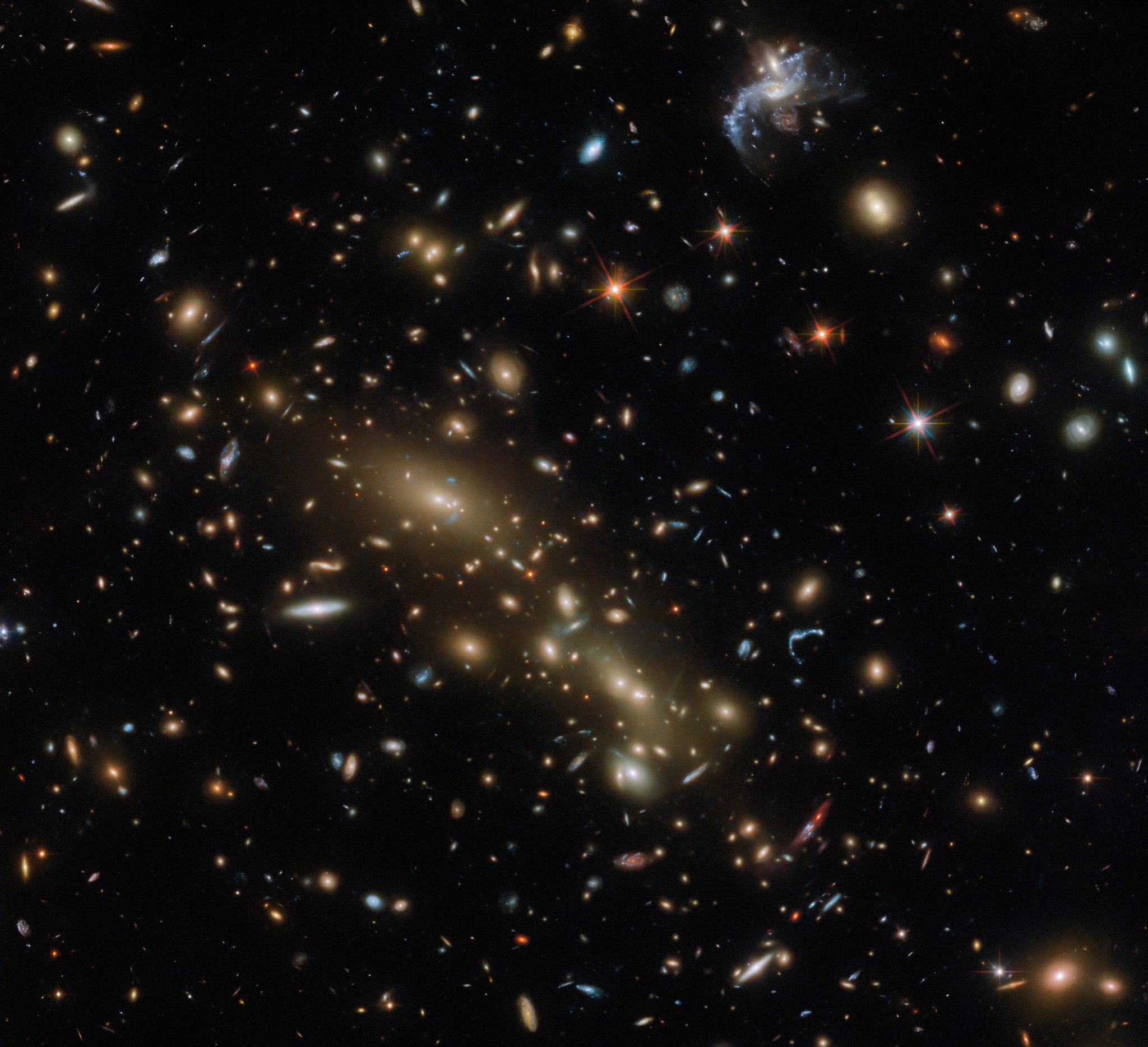Hubble Views a Double Cluster of Glowing Galaxies
This Hubble image features a massive cluster of brightly glowing galaxies, first identified as Abell 3192. Like all galaxy clusters, this one is suffused with hot gas that emits powerful X-rays, and it is enveloped in a halo of invisible dark matter. All this unseen material – not to mention the many galaxies visible in this image […]

2 min read
Hubble Views a Double Cluster of Glowing Galaxies

This Hubble image features a massive cluster of brightly glowing galaxies, first identified as Abell 3192. Like all galaxy clusters, this one is suffused with hot gas that emits powerful X-rays, and it is enveloped in a halo of invisible dark matter. All this unseen material – not to mention the many galaxies visible in this image – comprises such a huge amount of mass that the galaxy cluster noticeably curves spacetime around it, making it into a gravitational lens. Smaller galaxies behind the cluster appear distorted into long, warped arcs around the cluster’s edges.
The galaxy cluster is in the constellation Eridanus, but the question of its distance from Earth is a more complicated one. Abell 3192 was originally documented in the 1989 update of the Abell catalog of galaxy clusters that was first published in 1958. At that time, Abell 3192 was thought to comprise a single cluster of galaxies, concentrated at a single distance. However, further research revealed something surprising: the cluster’s mass seemed to be densest at two distinct points rather than one.
It was subsequently shown that the original Abell cluster is actually comprised of two independent galaxy clusters – a foreground group around 2.3 billion light-years from Earth, and another group at the greater distance of about 5.4 billion light-years from our planet. The more distant galaxy cluster, included in the Massive Cluster Survey as MCS J0358.8-2955, is central in this image. The two galaxy groups are thought to have masses equivalent to around 30 trillion and 120 trillion times the mass of the Sun, respectively. Both of the two largest galaxies at the center of this image are part of MCS J0358.8-2955; the smaller galaxies you see here, however, are a mixture of the two groups within Abell 3192.
Text credit: European Space Agency
Media Contact:
Claire Andreoli
NASA’s Goddard Space Flight Center, Greenbelt, MD
claire.andreoli@nasa.gov
Share
Details
Related Terms
Discover More Topics From NASA








































